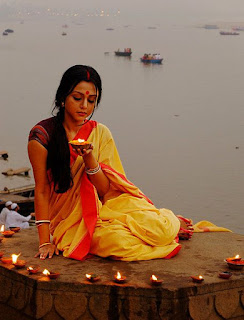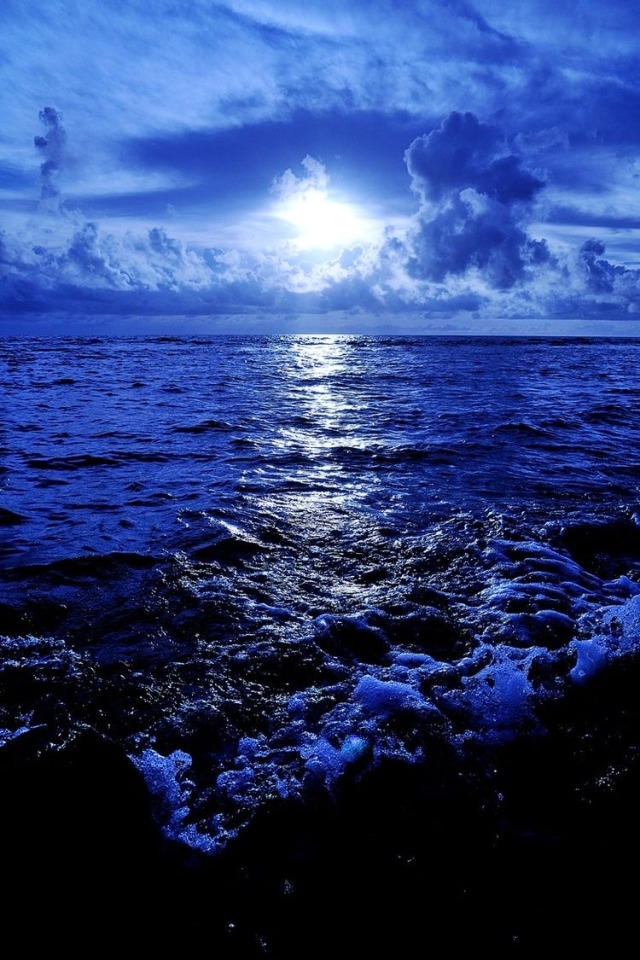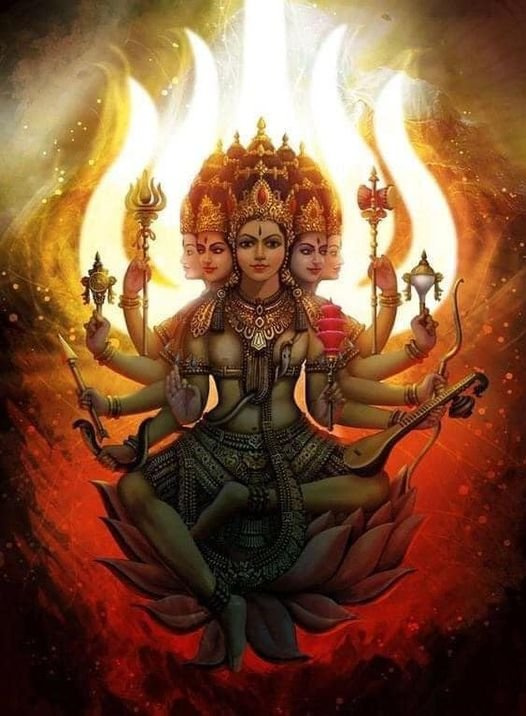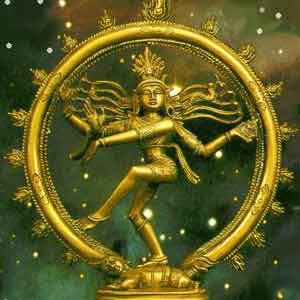“Sit still, chant Om’ and then think Who is within you. All the Vedanta, nay all the philosophy of the Hindus is simply an exposition of this syllable Om.’ Om’ has a charm about it, an efficiency, a virtue in it which directly brings all feelings and all thoughts into a state of harmony, brings peace and rest to the soul and puts the mind in a state where it is one with God. Science may not be able to explain this, but this is a fact which can be verified by experiment. Woe unto science if it goes against the truth connected with the efficiency of the sacred syllable Om.’ The real Self which is knowledge absolute and power absolute is the only stern Reality, before which the apparent reality of the world melts away! Om’ is the name of this Reality.
Monday, January 31, 2022
Swami Rama Tirtha
“Sit still, chant Om’ and then think Who is within you. All the Vedanta, nay all the philosophy of the Hindus is simply an exposition of this syllable Om.’ Om’ has a charm about it, an efficiency, a virtue in it which directly brings all feelings and all thoughts into a state of harmony, brings peace and rest to the soul and puts the mind in a state where it is one with God. Science may not be able to explain this, but this is a fact which can be verified by experiment. Woe unto science if it goes against the truth connected with the efficiency of the sacred syllable Om.’ The real Self which is knowledge absolute and power absolute is the only stern Reality, before which the apparent reality of the world melts away! Om’ is the name of this Reality.
Ramana Maharshi
“That inner Self, as the primeval Spirit, Eternal, ever effulgent, full and infinite Bliss, Single, indivisible, whole and living, Shines in everyone as the witnessing awareness. That self in its splendour, shining in the cavity of the heart This self is neither born nor dies, Neither grows nor decays, Nor does it suffer any change. When a pot is broken, the space within it is not, And similarly, when the body dies the Self in it remains eternal.”
Robert Wilkenson
John Tarrant, The Light Inside the Dark: Zen, Soul, and the Spiritual Life
“…we see that everything has arranged itself around the water playing in the sunlight: here is the source of the timelessness that is everywhere apparent. The more deeply we enter, the more… awe and wonder claim us.”
Papaji
WU HSIN
Ram Dass
As you dissolve into love, your ego fades. You’re not thinking about loving; you’re just being love, radiating like the sun.
David R Hawkins, "The Eye of the I: From Which Nothing Is Hidden"
As the state of enlightenment presents itself, there is a glad moment as though experiencing a reentry into the profoundly familiar. There is a fleeting, transitory thought that one had forgotten who they were. This forgetting was a consequence of the operation of perception itself.
Have you ever read these Western philosophers?
1. *Leo Tolstoy (1828-1910)*
Hindus and Hindutva will one day rule the world, because this is a combination of knowledge and wisdom.
2. *Herbert Wells (1846 - 1946):*
Until the effectiveness of Hindutva is restored, how many generations will suffer atrocities and life will be cut off, then one day the entire world will be attracted to it, on that day there will be Dilshad and on that day the world will be inhabited.
3. *Albert Einstein (1879-1955):*
I understand that through his intelligence and awareness he did that which the Jews could not do. In Hinduism it is the power that can lead to peace.
4. *Huston Smith (1919):*
The faith which is upon us and this is better than us in the world, then it is Hindutva. If we open our hearts and minds for it, then it will be good for us.
5. *Michael Nostradamus (1503 - 1566):*
Hindutva will become the ruler religion in Europe, but the famous city of Europe will become the Hindu capital.
6. *Bertrand Russell (1872 - 1970):*
I read Hinduism and realized that it is for the religion of all the world and all mankind. Hindutva will spread throughout Europe and in Europe, big thinkers of Hinduism will emerge. One day it will come that Hindus will be the real stimulus of the world. .
7. *Gosta Lobon (1841 - 1931):*
Hindus speak of peace and reconciliation. I invite Christians to appreciate the faith of reform.
8. *Bernard Shaw (1856 - 1950):*
The entire world will accept Hindu religion one day and if it can not even accept the real name it will accept it by name only. West will accept Hindutva one day and Hindu will be the religion of those who have studied in the world .
Sunday, January 30, 2022
Nisargadatta Maharaj from I Am That
By its very nature, the mind is outward turned; it always tends to seek for the source of things among the things themselves; to be told to look for the source within, is, in a way, the beginning of a new life. Awareness takes the place of consciousness; in consciousness there is the “I”, who is conscious, while awareness is undivided; awareness is aware of itself. The “I am” is a thought, while awareness is not a thought; there is no “I am aware” in awareness. Consciousness is an attribute while awareness is not; one can be aware of being conscious, but not conscious of awareness. God is the totality of consciousness, but awareness is beyond all - being as well as not-being. (263)
SRI CHINMOY AND OTHERS
Paradise is not a place. It is a state of consciousness.
Buddha
Sri Nisargadatta
Chandogya Upanishad, VII.24.1
Where one sees nothing else, hears nothing else, understands nothing else, that is the infinite. But where one sees something else, hears something else, understands something else, that is the small (ie. the finite). Verily, the infinite is the same as the immortal, the finite is the same as the mortal
The Third Eye in Meditation
“Close your eyes as in sleep, and look sweetly, lovingly, intently into the middle of the darkness lying in front of you. You will see a dark veil. That which sees the dark veil within, without the help of your physical eyes, IS the inner eye.” (Kirpal Singh)
Anon I mus (Spiritually Anonymous)
“Love is the greatest, unifying force of existence. Only love has the power to transform our inner, barren desert of personal suffering into an oasis of eternal bliss.”
*Subscribe to Anon I mus Youtube channel @ https://www.youtube.com/user/SpirituallyAnonImus http://egoawarenessmovement.org
Hermann Hesse
We are not going in circles, we are going upwards. The path is a spiral and we have already climbed many steps.
Geshe Sonam Rinchen
"If you want to change and aspire to see others change, if you hope for peace in the world, you must begin by making yourself more peaceful....It is futile to dream of peace while the disturbing emotions rage within us."
J. T. P. De Bruijn, Persian Sufi Poetry
“Love is probably the most universal symbol for the relationship between the mystic and the Divine goal of his quest. Mystics in all cultures have adopted it as an essential part of the verbal means they use to express their desires and their experiences. In the language of love the most elevated thoughts about the relationship between man and his Creator can be put into words, in the most complete manner in which human speech is able to express that mystery for which there are no words.”
'The Heart Of Mysticism', Joel Goldsmith
'In order to enter into the mystical life, one must master the ability to remain in the silence without thought; and, this is the most difficult part of all spiritual living. In no way is this a cessation or repression of thought, nor an effort toward such. Instead, it is attaining such deep communion with God that thought stops of its own accord'
SRI RAMAKRISHNA
When the Godhead [the Father] is thought of as creating, preserving, and destroyinq, It is known as the Personal God, Saguna Brahman, or the Primal Energy, Adyasakti [the Mother]. Again, when It is thought of as beyond the three gunas [the three qualities of the phenomenal world – sattwa, rajas, and thamas, or balance, energy, and sloth], then It is called the Attributeless Reality, Nirguna Brahman, beyond speech and thought; this is the Supreme Brahman, Parabrahman. (31)
Kali stands on the bosom of Siva; Siva lies under Her feet like a corpse; Kali looks at Siva. All this denotes the union of Purusha and Prakriti. Purusha is inactive; therefore Siva lies on the ground like a corpse. Prakriti performs all Her activities in conjunction with Purusha. Thus She creates, preserves, and destroys. (32)
Those that do not know
Saturday, January 29, 2022
All is One (Brahman)
Hinduism
🕉 Ishavasya Upanishad
-
Recently a Russian Orientalist, Mr Sergei Alexeyev, has described Jesus as a Hindu Sannyasin.The publication of this book will help Chris...
-
“As the sun, revealer of all objects to the seer, is not harmed by the sinful eye, nor by the impurities of the objects it gazes on, so th...
-
Truth is eternal. The so-called revelations of Truth that come in different religions are actually a re-emphasis of an ever existing doctr...

























